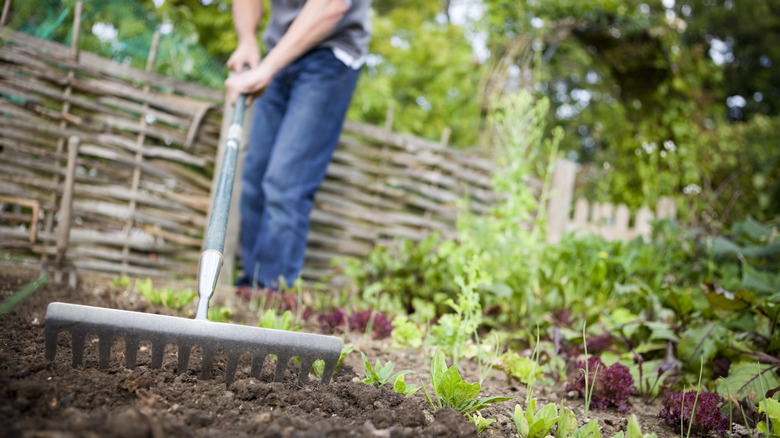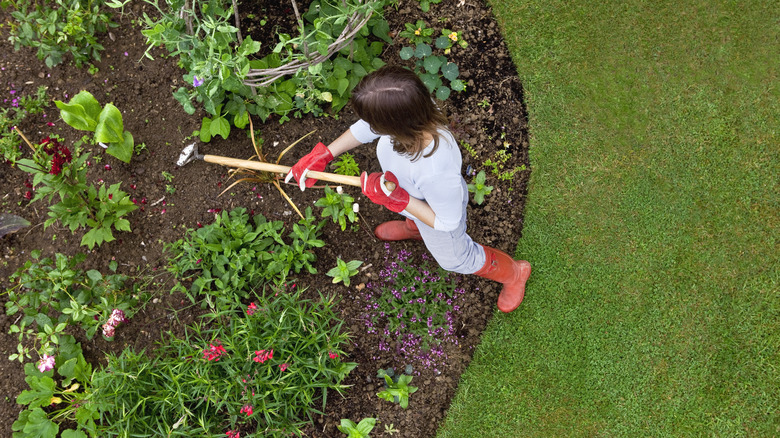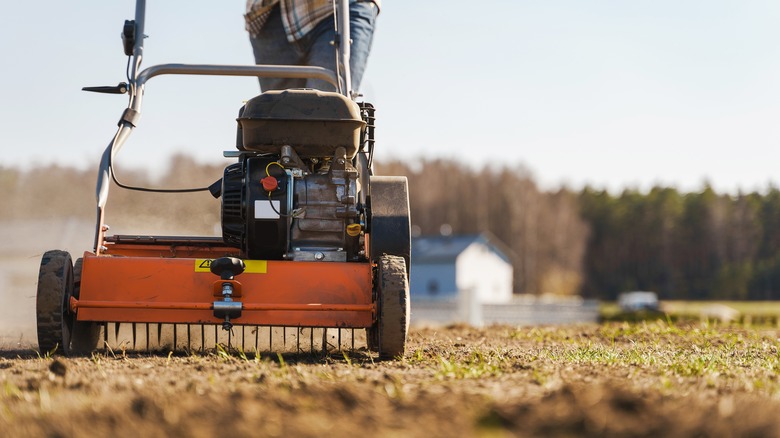This Old Household Staple Could Be The Key To Healthier Soil
We may receive a commission on purchases made from links.
One of the key components to maintaining a healthy garden is to be sure the soil is well aerated, allowing oxygen to reach the roots of your plants and water and nutrients to flow freely through the ground. When the soil becomes compacted, it limits the movement of air and water beneath the ground, suffocating both the roots and the microorganisms that need oxygen to live. Moreover, compacted soil can also restrict the growth of plant roots, which can stunt the overall growth of the plant. One easy way to prevent this outcome is to aerate your lawn or garden plant soil by gently loosening it when you notice signs of compaction. This is a relatively easy process and can even be done with the handle of an old broom.
If your garden is in need of aeration, an old broom handle is a great tool to help you do so. In particular, both the length of the broom and the sturdy wooden build mean it can easily penetrate the compacted soil, breaking up any clumps and loosening it for air and water to flow more freely. While garden centers and hardware stores do sell tools particularly engineered for aerating soil, these tools can become expensive and require additional storage. Why not use a tool you already have for a dual purpose? Your old broom handle is a practical and affordable solution that is likely collecting dust in the back of a closet.
Aerating soil with a broom handle
Depending on the type of soil you have in your climate, aerating your soil may only be an annual task, particularly for sandy soils, as they are less likely to become compacted. Clay soils, however, may require more attention throughout the year. Nevertheless, with a simple broom handle, you can easily ensure your plants have access to the air and water they desperately need to flourish in your garden.
To get started, identify the areas of your garden that need aeration. You'll notice these spaces often have bare patches with water pooling on them when it rains. To aerate them, hold the handle of the broom firmly and insert it into the ground. If the ground resists, try twisting the handle by rotating it back and forth to break up compacted soil. You can also moisten the ground with water if the soil is particularly dry to make it easier to insert the broom.
Continue every few inches to break up the soil. Be careful to avoid excessive force as you can damage plant roots unintentionally. Once you've successfully broken up the soil, it's important to water the garden to complete the process. Use a watering can or a hose with a soft spray attachment. You'll know you've aerated the soil well if the water freely flows into the ground without pooling and the soil seems to absorb the moisture rather than letting it simply pass through quickly.
Alternatives to this method
If you don't have a spare broom to dedicate to your garden, there are other tools you may have lying around that can also work well to break up any compacted soil. A pitchfork is a great alternative that may even work better than a broom handle as it has multiple times, making several holes with just one movement. It may also save you time and sweat during this process. To use a pitchfork, proceed in a similar fashion as you would an old broomstick by inserting the tines into the ground and gently twisting to break up the soil. Do mind the sharp ends of the pitchfork as they can more easily damage any unsuspecting roots that may be lurking below the surface.
If repurposing another tool isn't your speed, you can of course upgrade to an actual lawn aerator for your lawn. There are a range of tools in terms of simplicity, price, and function. At one end, there are spike shoe attachments that you can wear on your feet to easily break up soil as you walk across the ground. These are available at Amazon for $23.99. Mid-range features a manual spike aerator pole which has 15 spikes across a horizontal plane on one end, available at Home Depot for $31.95. Finally, Amazon features a walk-behind dethatcher with an aerator attachment for $169.99. This would be best for a large lawn deeply in need of dethatching and aerating.


